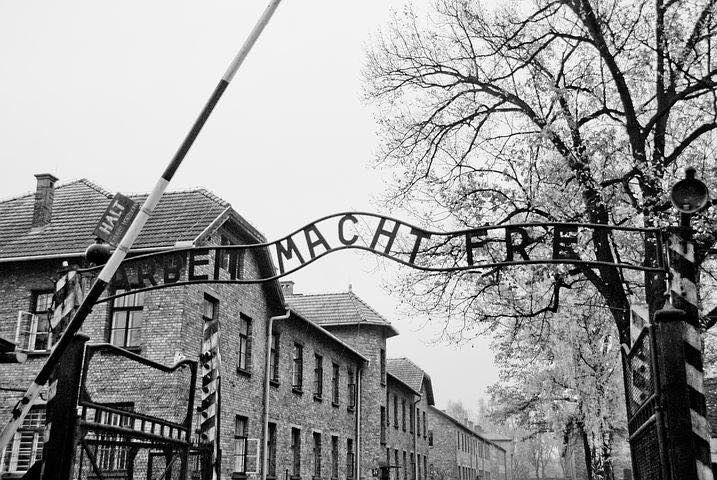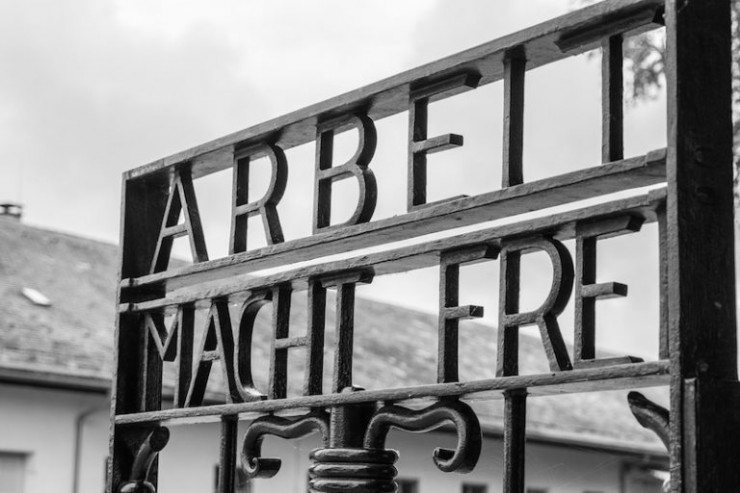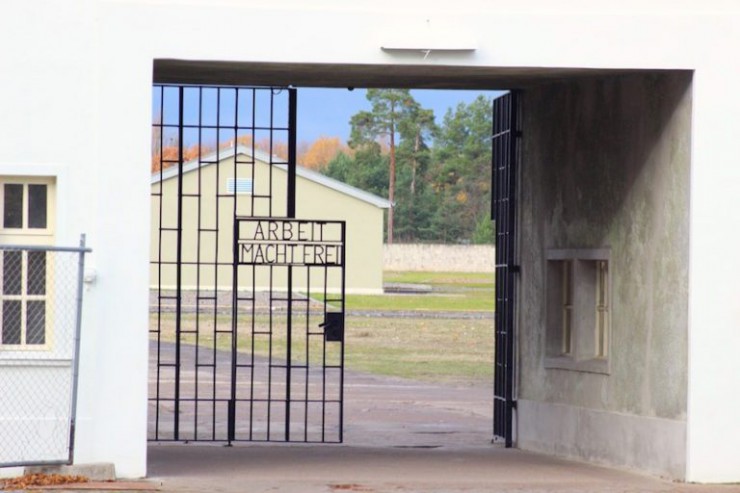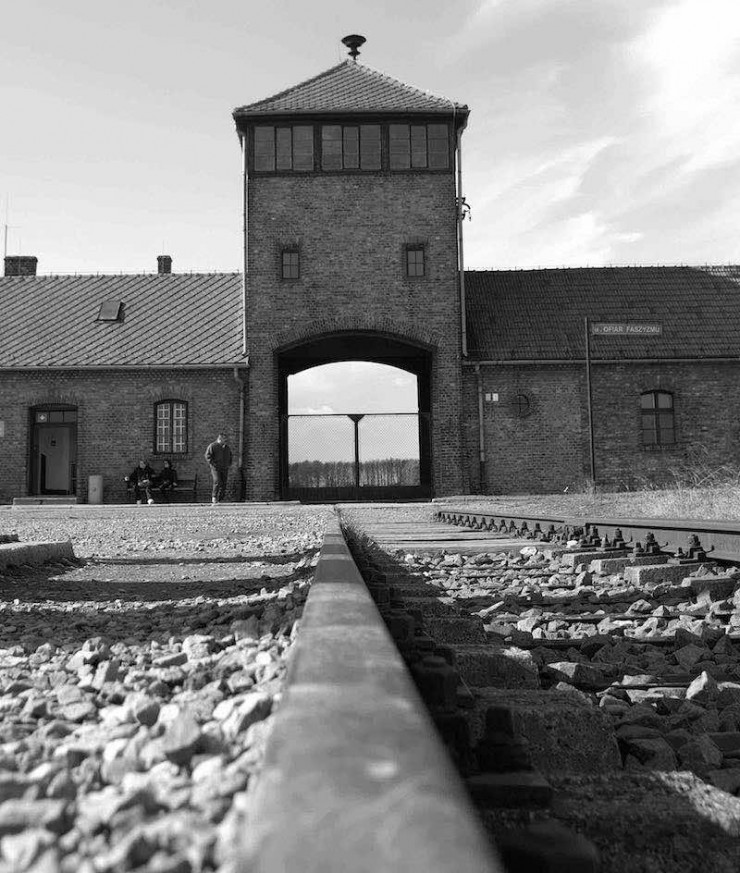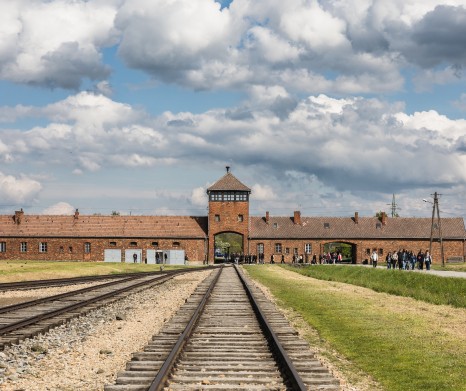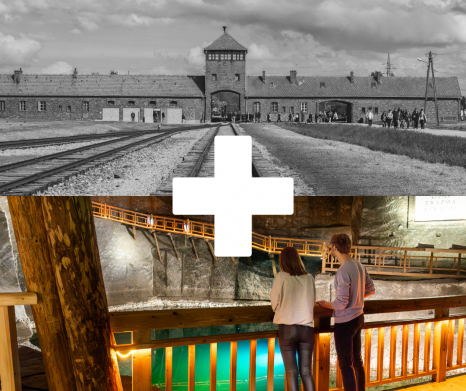Almost any visitor of Auschwitz – Birkenau Concentration Camp gets goosebumps walking under the famous sign. So many prisoners walked through this gate every day and saw this inscription – Arbeit Macht Frei. Cruel and sarcastic since most of them never got to be free again. If you are interested in visiting Auschwitz Museum, you should definitely learn more about it, so you are fully prepared for your tour.
What is the story behind the most famous Auschwitz symbol?
Arbeit Macht Frei – what does it mean?
We can translate it to “Work sets one free“. It was meant to encourage prisoners to work harder and gave them hope of being free again. However, after a few months, every person inside the Camp knew, that getting freedom back is not an option.
How pronounce “arbeit macht frei“?
You can pronounce this inscription as: ar bait – makt – frai
Here is a video to help you even more:
Where was “arbeit macht frei” sign located?
The inscription is located over the main gate to the Auschwitz I and others Camps (more about it later in the article).
Why was this inscription chosen?
Where did the famous Nazi maxim come from? It is a paraphrased quote from the Gospel of Saint. John (J8, 32), widespread in the Protestant tradition – “Wahrheit macht frei” – “and you will know the truth, and the truth will set you free“. Like many other ideas, the Nazis have perfidiously used this passage for their own ideological purposes. In the 1930s, they promoted programs against unemployment through this sentence.
Why, however, did these words hit the camp gates? Thanks to SS General Theodor Eicke, who co-founded the German system of concentration camps. The inscription was placed not only in Auschwitz and Dachau but also in Sachsenhausen, Gross-Rosen, and Theresienstadt.
In contrast, in the camp Buchenwald a different thought was used in a perverse way – “Jedem das Seine”, which means “each gets what they deserve”.
Was “arbeit macht frei? a nazi joke?
In a book about Auschwitz, Otto Friedrich claims, that that the originator of the motto over the gate did not use it as a cruel joke, but used it in more “spiritual sense”:
He seems not to have intended it as a mockery, nor even to have intended it literally, as a false promise that those who worked to exhaustion would eventually be released, but rather as a kind of mystical declaration that self-sacrifice in the form of endless labour does in itself bring a kind of spiritual freedom.
- Friedrich, Otto (August 1994). The Kingdom of Auschwitz
Needless to say, it was very hard to see this spiritual side of this sentence by prisoners and by us today.
Why is the “B” upside down?
The inscription “Arbeit macht frei” in Auschwitz (the inscription on the gate of Auschwitz I, through which prisoners from the labor commissures wandered) was made by one of the prisoners, the blacksmith Jan Liwacz.
It is not known until the end whether the letter “B” used in it was intentionally reversed or was it an honest mistake.
For many people, however, this is a well-thought-out action, a manifestation of resistance to the Nazis and a desperate disagreement with the death machine they have unleashed.
What did the prisoners think about this sign?
Witold Pilecki:
I went through the gate to the camp. Yes, now I understood the inscription on the gate:! Oh yes, indeed … work makes you free … releases you from the camp … from consciousness, how I experienced it a moment ago. It triggers the spirit of the body, directing this body to the crematorium …
Wilhelm Brasse, no 3444:
How is such hypocrisy possible? We are not working here at all, we are just being tortured and murdered!
Kazimierz Albin:
We were shocked by the cynicism of the Germans. They wrote “work sets one free”, although we found out for ourselves that the work at Auschwitz was only a method of killing prisoners. So we quickly put together the words “Arbeit Macht Frei durch den Schornstein”, meaning “work makes free [to the exit] through the chimney.
Aleksander Miedziejewski:
But there was no freedom there! and from that moment it meant that hunger, hard labor, inhuman torture, and death would be your inseparable companion, and freedom can only be obtained through a crematorium oven because the Dachau camp gave prisoners three months of life.
What happened to the sign after the Liberation of the Camp?
After the liberation of the camp, Soviet soldiers loaded the inscription on the railway wagon, which was to go east, but the former prisoner Eugeniusz Nosal (camp number 693) and an accidental carter bribed the guard who was guarding the train with a bottle of alcohol and hid the original inscription in the municipal magistrate. When the Auschwitz Muzeum was created, the inscription returned to its place at the gate.
Why doesn’t the Birkenau gate have the “Arbeit Macht Frei” inscription on it like other camps?
The “Arbeit Macht Frei” gate in Auschwitz is created to remind working commandants consisting of prisoners who got into the camp that they have to work hard. Jewish families sent directly from the railway ramp to Birkenau and then gas chambers didn’t even have a chance to work, so the inscription was unnecessary.
Birkenau was created as an extermination camp.
It is truly is heartbreaking, and it is one of many shocking Auschwitz – Birkenau facts.
Thefts of the Arbeit Macht Frei sign
As unbelievable as it sounds, the sign got stolen in 2009. Three men (a Swedish neo-Nazi former leader and two Polish men) stole the sign as they claim: for financial gain, but their political affiliations make us wonder if that is the case.
The sign was recovered by Polish authorities in three pieces. Offenders were sentenced to jail.
After this incident the original sign is being presented in Auschwitz – Birkenau State Museum and visitors can see the replica on the Auschwitz gate.
The most popular choices
Why is an inscription “arbeit macht frei” so important today?
This sentence is a symbol of Concentration Camps. It is a reminder of what prisoners must have gone through.
Hundreds of thousands of tourists every year travel to Auschwitz – Birkenau to see this tragic place of genocide. It is an important visit and memorable experience that everyone should have.
If you are wondering how can you visit Auschwitz – Birkenau Museum – check out our offer with all the possibilities of visiting Auschwitz.
If you have any more questions about the sign or Auschwitz in general – please leave the comment below and we will happily help you find the answer.
